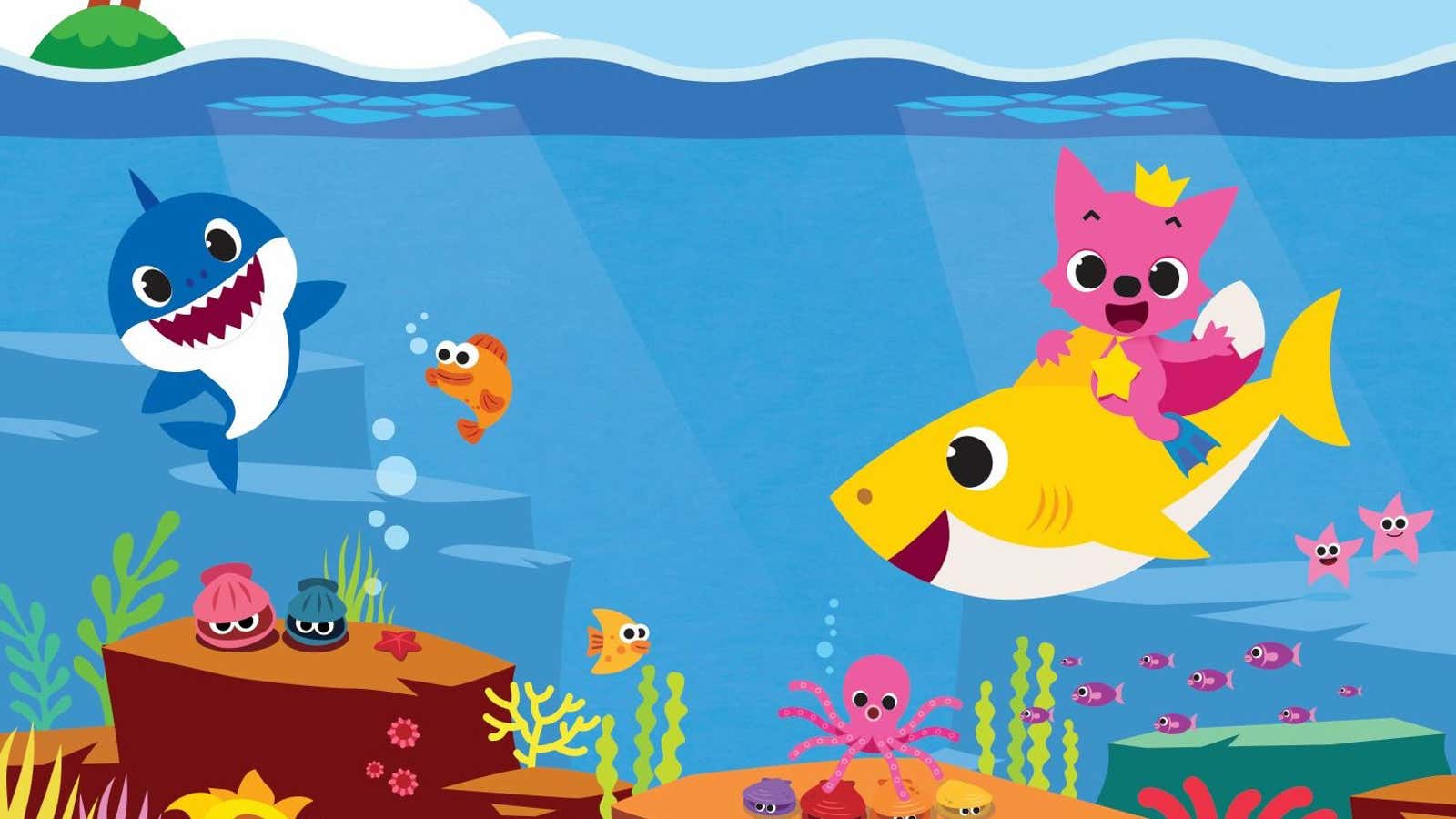Shark specialist David Shiffman is a postdoctoral research fellow in conservation biology at Canada’s Simon Fraser University and the expert behind @WhySharksMatter and the online column Dear Shark Man.
This week, one of his readers posed a compelling query: Are the relative sizes of the sharks in the viral hit song “Baby Shark” scientifically accurate?
If you are not familiar, “Baby Shark” is a decades-old children’s tune that has seen a massive resurgence in popularity, thanks to a viral YouTube video viewed 1.7 billion times since its upload in 2015.
Shiffman generously agreed to walk through the accuracy of the song for Quartz. His answers made clear: “Baby Shark” is one minute and 38 seconds of mostly shoddy shark science, though it does touch on a surprisingly accurate set of shark experiences.
The characters
Baby shark
The titular shark is perhaps the song’s only believable character. The tiny pinching bite that accompanies “baby shark” in the dance is as accurate a representation of neonatal shark feeding habits as is possible to make with a child’s fingers.
“Unlike in mammals, sharks have no parental care and baby sharks are born having to immediately fend for themselves,” Shiffman said. “As soon as they’re born, they need to be able to swim fast enough and bite hard enough to hunt and kill prey, or else they’ll starve.”
Mommy shark/Daddy shark
This is where the zoological accuracy of “Baby Shark” begins to break down. The hand motions that go with Mommy and Daddy shark imply that the mature male shark is physically larger than the female. That is not a safe assumption. “For most (possibly all, but I hesitate to say all because sharks are super weird) shark species, a mommy shark would almost always be larger than a daddy shark,” Shiffman said.
There are more than 400 known species of shark. The type depicted in “Baby Shark” is never specified.
Grandma shark/Grandpa shark
These too are gross physiological misrepresentations. Not only would Grandma usually be larger than Grandpa, both grandparent sharks would be larger than the parent sharks. “Sharks have what’s called ‘indeterminate growth,’” Shiffman explained, “which means they never stop growing as they age, so a grandma shark would be larger than a mommy shark.”
In the dance moves that accompany “Baby Shark,” the grandparent sharks are differentiated from the parents by their lack of teeth, which singers indicate by curling up their fingers at the knuckle. In fact, sharks continually regrow their lost teeth, sometimes going through thousands of teeth over a lifetime.
A toothless shark would be an anomaly. More accurately: A toothless shark would be dead, because it could not hunt. There aren’t even that many aged sharks in the first place, Shiffman says: “Many sharks don’t get to die of old age because we kill them first via overfishing.”
The behavior
“Let’s go hunt”
Sharks are predators; hunting is their primary activity. This part is correct.
“Run away”
Even if we assume that “run” means “swim,” this line’s shift in perspective is jarring. The song’s previous lines referenced the sharks themselves, so why would the focus suddenly shift to the prey? Aren’t sharks apex predators?
Not necessarily, according to Shiffman. “Some shark species are the apex predator of their particular food chain, sure, but there are over 500 species of sharks and they occupy a variety of ecological roles,” he says. “Some shark species are eaten by fishes, seals, orcas, crocodiles, or even birds.”
“Safe at last”
Is there any such thing as a safe haven in the sea? While no mortal creature is safe from death itself, could it at least possible for a shark to find a predator-free sanctuary in the wild—a place in which it would, in fact, be safe at last?
The answer is yes—at least for baby sharks.
“Baby sharks of some species spend the first few months (or longer) of their lives in shallow ‘nursery areas,’ which tend to be full of food and absent of predators,” Shiffman said.
“It’s the end”
Doo doo, da-doo da-doo doo doo. It checks out.
